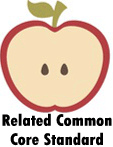Using Punctuation Worksheets To Print:
Parentheses – Those little symbols always slow me down. What the heck do they mean?
Use of Parentheses – Don't interrupt the flow of a sentence, just add more to it.
Writing: Using Commas – Commas are like a Swiss Army knife for sentence structure.
Using Parentheses in Writing – Need to get just a bit more into your sentences? Use these guys!
Writing: Using Parentheses – We have you create everything here. We just prompt you here.
The Dash as Punctuation – One way to use the dash as punctuation is to signal an interruption, particularly in quotations.
Dates | Numbers | Acronyms – Rewrite each sentence, placing parentheses in the correct places.
Punctuation: The Dash – A dash indicates dramatic pause or special emphasis. Dashes are used to emphasize information that interrupts the flow of a sentence.
Writing: Using Dashes – Write sentences according to the instructions below. Use parentheses correctly.
Punctuation – Rewrite each of the following sentences, adding the correct punctuation.
Setting Off Element – Rewrite each of the following sentence, adding the correct punctuation.
The Prince of Punctuation – Write sentences according to the instructions below.
Commas | Parentheses | Dashes – Rewrite each sentence, adding the correct punctuation.
Offsetting with Punctuation – Write sentences as instructed below. Use commas, parentheses and dashes correctly.
Choosing the Correct Punctuation – Choose the correct punctuation for each situation. Write the correct letter on the line.
Get FREE English Worksheets In Your Email

